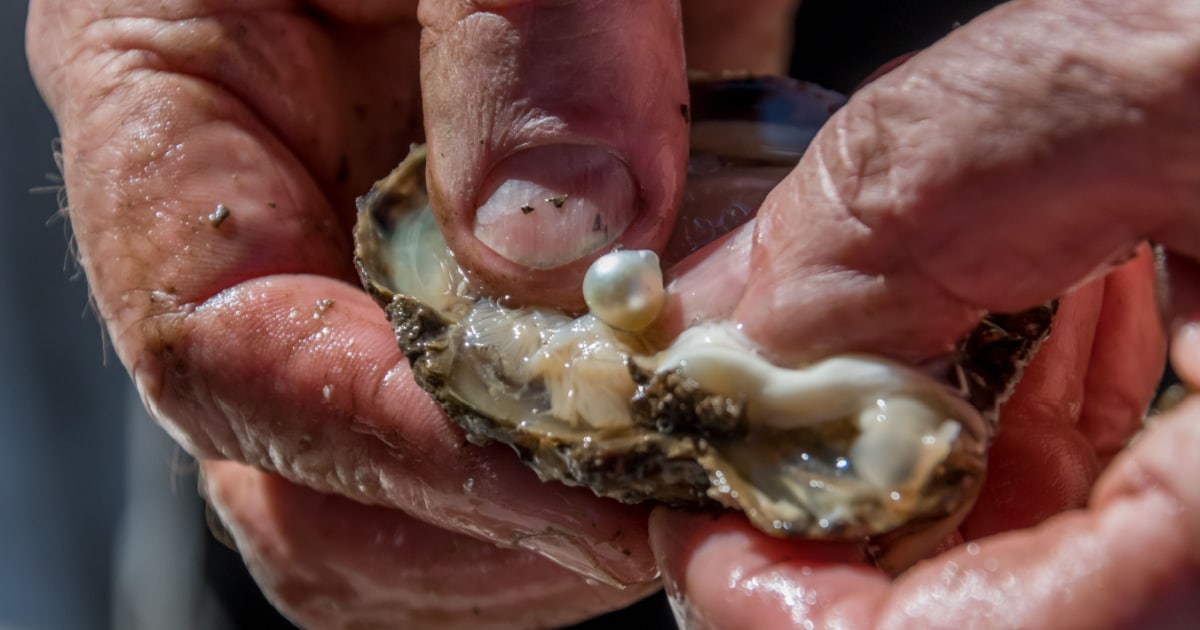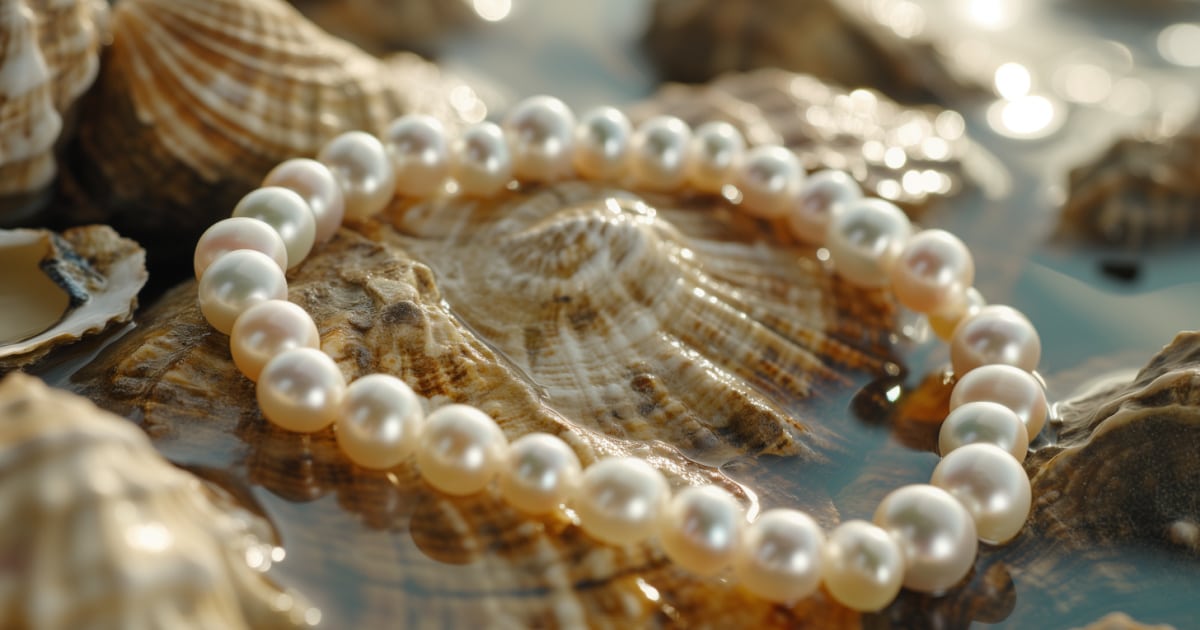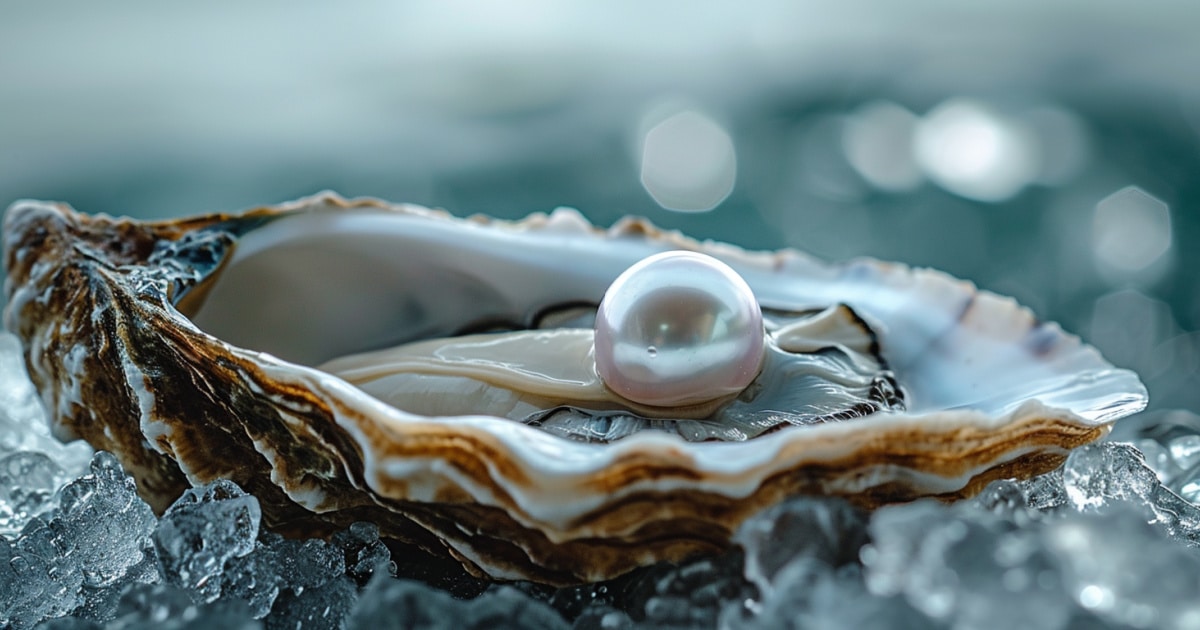Introduction: Understanding Pearl Formation in Oysters
Welcome to our exploration of one of nature’s most intriguing phenomena: pearl formation in oysters. As someone deeply involved in the seafood industry, I find the process by which oysters produce pearls both fascinating and complex. It’s a question that often arises: Why do oysters make pearls?
Pearls have captivated humans for centuries, not just for their beauty but also for the mystery surrounding their creation. In this article, we’ll delve into the scientific and biological aspects of how oysters form these precious gems. We’ll uncover the natural reasons behind this process and what makes pearls so unique.
Whether you’re an oyster enthusiast, a pearl admirer, or simply curious about the wonders of marine life, this journey into the world of oysters and pearls promises to be enlightening. So, let’s begin our exploration into why oysters make pearls.
- The Science Behind Pearl Formation: Why Do Oysters Make Pearls?
- Pearl Formation in Oysters vs. Other Shellfish
- Natural vs. Cultured Pearls: Understanding the Differences
- Environmental Impact: How It Answers ‘Why Do Oysters Make Pearls’
- The Cultural and Historical Journey of Pearls
- Conclusion: Understanding Why Do Oysters Make Pearls
- FAQs: Common Questions About Pearl Formation in Oysters (Why Do Oysters Make Pearls?)
- Explore More From T.L. Morris Seafood
The Science Behind Pearl Formation: Why Do Oysters Make Pearls?
One of the most common questions we encounter in the seafood business is, “Why do oysters make pearls?” It’s a fascinating process that combines biology and a bit of oceanic alchemy.
Pearls form when an irritant, often a small parasite or a piece of debris, finds its way into an oyster’s shell. This irritant isn’t harmful, but it does bother the oyster. To protect itself, the oyster starts a natural defense mechanism. It secretes a substance called nacre, also known as mother-of-pearl, which is the same material that lines the inside of its shell.
Layer upon layer of this nacre coats the irritant over time. It’s a slow and gradual process, taking years to form a pearl. The nacre layers are what give pearls their beautiful, iridescent luster. It’s like the oyster is turning a tiny annoyance into a stunning gem.
The type of oyster also plays a role in the kind of pearl it produces. For example, the Pinctada maxima oyster, found in the South Pacific, is known for its large and valuable pearls.
So, when we look at pearls, we’re actually seeing an oyster’s way of protecting itself, transformed into something precious. It’s a remarkable example of how nature can create beauty from something as simple as self-defense.

Pearl Formation in Oysters vs. Other Shellfish
While oysters are the most famous for pearl creation, they aren’t the only shellfish that produce these gems. Let’s compare how oysters make pearls with how other shellfish do it.
Oysters, particularly those from the Pinctada family, are renowned for their ability to create the classic, round pearls we often see in jewelry. The process begins, as we discussed, with an irritant entering the oyster, leading to the secretion of nacre.
However, other shellfish like mussels and clams can also produce pearls, though their pearls are often different in shape and luster. For instance, freshwater mussels, found in rivers and lakes, can produce pearls too. Their pearls are often not as round or lustrous as those from oysters but can still be quite beautiful. The process is similar – an irritant gets inside the shell, and the mussel coats it with layers of nacre.
The key difference lies in the type of nacre and the conditions inside the shellfish. Oysters, especially saltwater species, tend to have a thicker, more lustrous nacre, which results in high-quality pearls. Freshwater mussels, on the other hand, have a different nacre composition, leading to a variety of pearl shapes and colors.
So, while oysters are the champions of pearl production, other shellfish contribute their unique versions to the world of pearls. Each type of shellfish adds its own touch, creating a diverse array of pearls found in nature.
Natural vs. Cultured Pearls: Understanding the Differences
In the world of pearls, there’s a significant distinction between natural and cultured varieties, and understanding this difference is key for anyone interested in these marine treasures.
Natural pearls, like those formed in oysters, occur without any human intervention. As we’ve discussed, they form when an irritant accidentally enters an oyster, triggering the nacre secretion process. These pearls are rare and highly valued, not just for their beauty but also for their rarity in nature.
Cultured pearls, on the other hand, are the result of a process initiated by pearl farmers. In cultured pearl farming, a small bead or piece of tissue is deliberately inserted into an oyster or a mussel. This acts as the irritant, and the oyster responds by coating it with nacre, just as it would in the wild. The majority of pearls sold today are cultured, as this method allows for more control over the size, shape, and quality of the pearls produced.
The cultivation process also enables the production of pearls in a more sustainable and predictable manner. Cultured pearls can be created in both freshwater and saltwater environments, with each offering different qualities and characteristics in the pearls.
While natural pearls are often considered more valuable due to their rarity, cultured pearls offer a wider range of options in terms of size, color, and shape. Both types hold their unique allure and are cherished for their beauty and the skill involved in their creation.
Environmental Impact: How It Answers ‘Why Do Oysters Make Pearls’
The environment plays a crucial role in answering the question, “Why do oysters make pearls?” It’s not just about the biological process within the oysters but also about the conditions they live in.
Water quality is paramount. Clean, pollutant-free water is essential for healthy pearl formation. Pollutants can affect the oyster’s ability to produce nacre properly, leading to lower-quality pearls. The salinity and temperature of the water also significantly influence pearl development. Oysters in different water conditions will produce pearls with varying characteristics in terms of color, size, and luster.
Additionally, the food available to oysters in their habitat impacts pearl formation. A nutrient-rich diet contributes to the overall health of the oyster, which in turn affects the quality of the pearls it produces. Healthy oysters are more likely to produce high-quality pearls.
Understanding these environmental factors helps us appreciate why oysters make pearls the way they do. It’s a delicate balance between the oyster’s natural biology and its surroundings. The right environmental conditions are as crucial as the oyster’s internal processes in creating the perfect pearl.

The Cultural and Historical Journey of Pearls
Pearls have held a special place in human culture and history, transcending mere adornment to become symbols of wealth, purity, and elegance. The journey of pearls through history helps us understand why oysters making pearls has been so significant to different civilizations.
Historically, pearls were highly prized by ancient cultures. In Rome, pearls were considered the ultimate status symbol. In ancient China, they were believed to protect against fire and dragons. The Greeks associated pearls with love and marriage. This wide cultural reverence stems partly from the rarity and beauty of natural pearls, which were difficult to come by before the advent of pearl farming.
The discovery and development of cultured pearls in the early 20th century brought a significant shift. Pearls became more accessible, yet they retained their allure and status. Today, pearls are still synonymous with elegance and are a staple in fine jewelry.
The fascination with pearls, sparked by the simple question of why oysters make pearls, has thus been a constant through history. It’s a testament to the enduring allure of these natural gems and the mystique surrounding their formation.
Conclusion: Understanding Why Do Oysters Make Pearls
In conclusion, the question “Why do oysters make pearls?” opens a window into a fascinating natural process. It’s a blend of biology, environmental factors, and a bit of oceanic magic. From the natural defense mechanism of oysters to the influence of their habitats, pearl formation is a complex and beautiful phenomenon.
As we’ve seen, pearls are more than just lustrous gems; they carry a rich history and cultural significance. Understanding the process behind their creation deepens our appreciation for these treasures of the sea. It’s a reminder of the intricate connections between nature’s wonders and human admiration.
FAQs: Common Questions About Pearl Formation in Oysters (Why Do Oysters Make Pearls?)
1. Why do oysters make pearls?
- “Oysters produce pearls as a natural defense mechanism against irritants like sand or parasites that enter their shell.”
2. Can all oysters make pearls?
- “While all oysters have the potential to make pearls, it’s more common in certain species, especially those in the Pinctada genus.”
3. How long does it take for an oyster to make a pearl?
- “It can take several years for an oyster to form a pearl, with the exact time depending on the size and type of pearl.”
4. What’s the difference between natural and cultured pearls?
- “Natural pearls form without human intervention, while cultured pearls are created by deliberately inserting an irritant into an oyster.”
5. Do pearls come in different colors?
- “Yes, pearls can vary in color based on the type of oyster and environmental factors, ranging from white and cream to black, blue, and even green.”
6. Are freshwater pearls different from saltwater pearls?
- “Yes, freshwater and saltwater pearls differ in size, shape, luster, and texture due to the different species of mollusks and environments they come from.”
7. Can other shellfish make pearls?
- “Yes, other shellfish like mussels and clams can also produce pearls, though they are often different in shape and luster compared to oyster pearls.”
8. How do environmental factors affect pearl formation?
- “Water quality, temperature, and the oyster’s diet can influence the size, shape, and luster of the pearls they produce.”
These FAQs provide a quick overview of the most common questions related to pearl formation in oysters, offering readers a concise summary of key points from the article.
Explore More From T.L. Morris Seafood
If you enjoyed this post, you’re in for a treat! Dive deeper into seafood with some of my other articles that readers have loved:
- Pea Crab: The Astonishing Hidden Guests Inside Your Next Oyster!– Unveil the secret life of a pea crab inside oysters: tiny, fascinating creatures shaping the marine ecosystem’s delicate balance.
- When Are Oysters in Season? It May Surprise You!– Learn ‘When Are Oysters in Season’ and the best months to enjoy these shellfish, from the Chesapeake Bay to the Pacific Northwest.
- Are Oysters Good for You? The Comprehensive Guide– Discover the health benefits of oysters in our latest article: Are oysters good for you? Dive into the facts now!
- Unlock the Secrets: How Do Oysters Reproduce?– Explore the fascinating process of how do oysters reproduce, from spawning to larvae growth, and their vital role in marine ecosystems.
Stay connected and keep exploring! Don’t forget to subscribe for the latest updates and insights.

